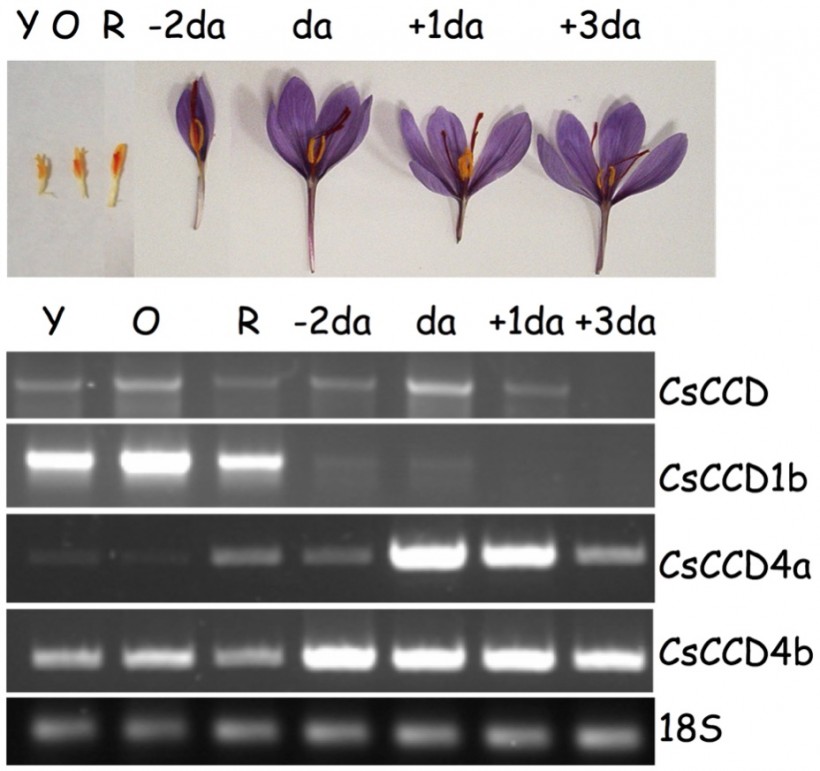Summary
Carotenoids are one of the most diverse and widely distribute groups of natural terpenoid pigments (Bourgaud et al. 2001). Apocarotenoids are a class of natural products derived from the oxidative cleavage of carotenoids. These compounds serve important biological functions in a variety of organisms and also have agronomic value as pigments and flavor/aroma components in a variety of foods Both compounds play essential functions protecting against oxidative damage, during abiotic stress, being responsible for the colour and the flavour of many plant products, such as tomato and saffron. Because of the importance of carotenoids the enzymes responsible for the biosynthetic pathway from phytoene to zeaxanthine have been characterised and theirs structural genes cloned from a wide array of higher plants (Hirschberg, 2001). However, only recently the identification of genes encoding for the enzymes involved in the biosynthesis of further carotenoids derivatives, the apocarotenoids have began. Many apocarotenoids serve important biological functions. Retinoids, for example are necessary for development and vision in animals. Abscisic acid is a plant hormone necessary for seed development and adaptation to environmental stresses. Therefore, these apocarotenogenic enzymes are good targets for metabolic engineering, and the corresponding genes can be employed as tools for a new stategy of heterologous expression in different host organism, allowing increases in the production of rare apocarotenoids (Misawa & Shimada, 1998). In addition, could be possible to produce a much wider range of apocarotenoids by molecular breeding (Sandmann, 2001).
Saffron is used almost exclusively as a culinary seasoning and to colour. In the stigma of Crocus sativus the carotenoids derivates crocin and crocetin have been identified as major components of the spice saffron (Winterhalter & Straubinger, 2000). In 1982, Pfander and Schurtenberger proposed that the saffron’s carotenoids were formed from oxidative cleavage of zeaxanthin (3,3′-dihydroxi- β-carotene), which is originate by hydroxylation of the cyclic carotene, β-carotene, in a reaction catalysed by the enzyme β-carotene hydroxylase (BCH). The goal of this project is the isolation and identification of the genes coding for the enzymes involved in the biosynthesis of crocin and crocetin in saffron.


